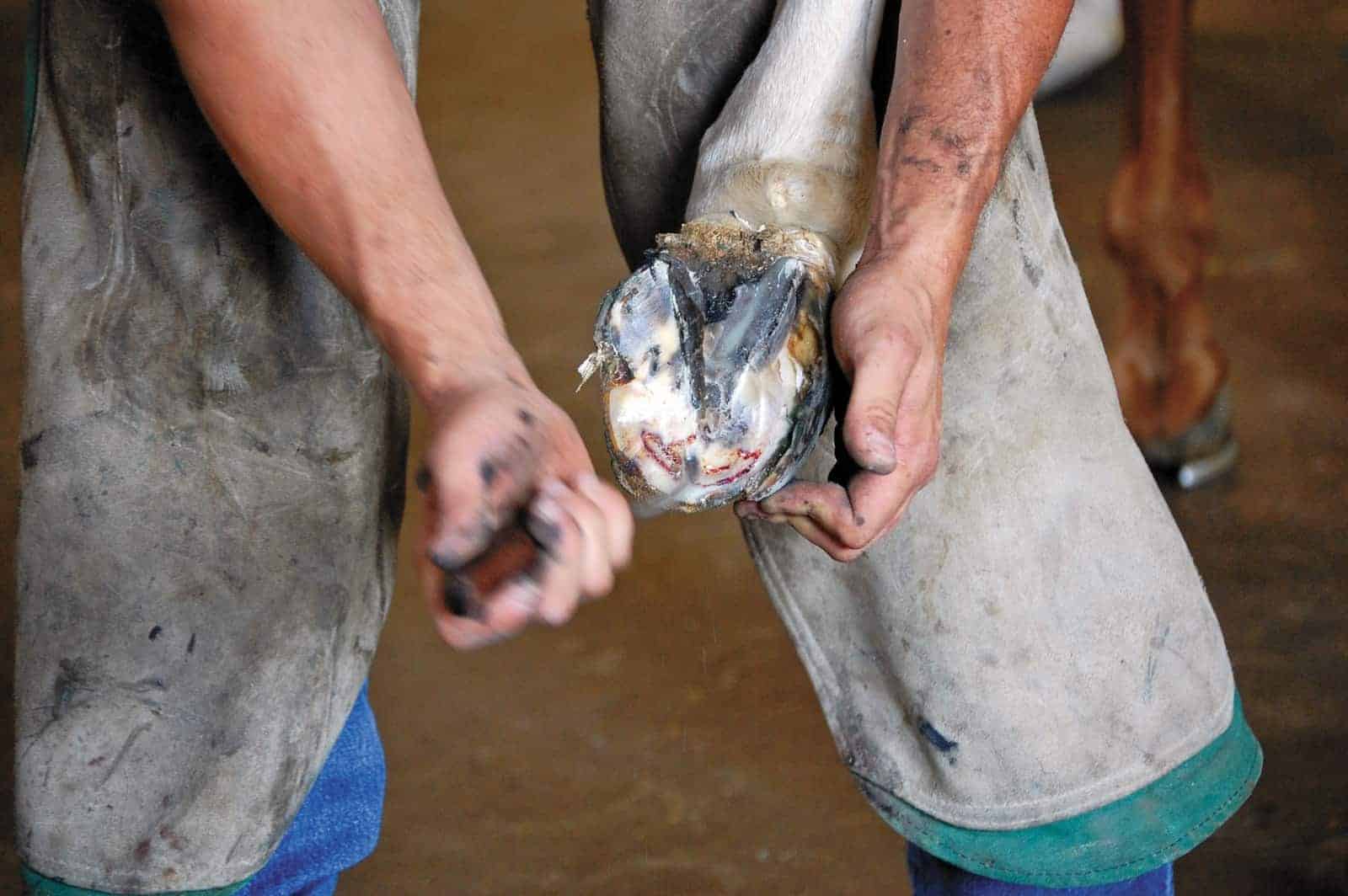Fighting White Line Disease

This disease’s complex management and treatment aspects are probably best narrowed to three components: hoof care, diet, and environment. Ignoring any one of these can cause an otherwise good plan to fail.
Hoof care
A veterinarian and farrier team is best suited to address individual WLD cases, so we will cover only general principles here. First, the affected area must be opened and dried out with a topical product such as chlorine dioxide or Gentian violet. The degree of damage will dictate the amount of hoof wall debridement required, and care must be exercised not to damage healthy tissue or create more damage to the wall than is prudent—the horse still must bear weight comfortably. Treatment is aimed at killing fungi or fungal spores rather than trying to burn or harden sensitive tissue, as the latter actually slows the overall healing process.
Second, the vet-farrier team should provide coffin bone support either by casting or shoeing and remove flares, seedy toe, and lamellar wedges (abnormal horn structure that develops within the lamellar region of the foot) to establish a proper weight-bearing structure for the horse. Finally—a step that’s often overlooked—your farrier should trim and shoe the horse to achieve a heel-first landing and proper weight bearing over the solar surface of the foot.
Diet
We know many horses that suffer from WLD are insulin resistant or have equine metabolic syndrome, and we know forage type, quality, and quantity directly influence insulin levels. So we must consider feed types and sources for affected horses. Insulin resistance, for instance, can cause blood vessels at the extremities to contract, potentially compromising blood flow to the foot’s tissues, so we’d focus on a low-calorie/low-carb diet.
Environment
Horses with poor blood circulation in their feet require adequate exercise to stimulate blood flow, so turnout and pasture time are critical to overall success. Stalling rather than turning out in a paddock environment may be the single biggest factor compounding pathogen growth and damage associated with white line disease. Horses moving even in small paddocks are much better equipped to battle opportunistic hoof pathogens than those living stationary in a stall environment.
Hoof form and function has developed into an entire field of study and, as we gain knowledge pertaining to current practices, we have begun to rethink our current animal husbandry guidelines or practices. Researchers are examining how bedding types and footing (e.g., pea gravel vs. sand) affect foot growth and function. Results from one study showed that changes in confinement and footing materials were superior to current white line disease and laminitis treatment techniques.
There is much more to white line disease than hoof wall separation or an ideal environment for fungi to become pathogenic. We need to realize that fungi are opportunistic and will continue to cause problems until we debride and treat the affected areas. While it’s still open for some debate, many researchers generally believe WLD is tied to the way we house and care for our horses. Volumes are being written on this subject, and the answers we seek will affect the future care and husbandry of our horses.
Written by:
Preston Hickman, DVM
Related Articles
Stay on top of the most recent Horse Health news with















